A quick jobsite visit to the western suburbs of Chicago found hydronics guru Alan Carlson (Instagram @alan_carlson) swapping out leaking boilers at an 80-unit apartment complex. Carlson, a plumbing and heating industry veteran has been repping the trades for the past 19 years. He entered the plumbing trade back in 2001, and for the past Read more
Featured Articles
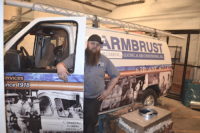
A quick jobsite visit to the western suburbs of Chicago found hydronics guru Alan Carlson (Instagram @alan_carlson) swapping out leaking boilers at an 80-unit apartment complex.
Carlson, a plumbing and heating industry veteran has been repping the trades for the past 19 years. He entered the plumbing trade back in 2001, and for the past few years now, he has moved over to the hydronics side of the job with Ambrust Plumbing & Heating Solutions, Carol Stream, Ill., to where—back in 2014—he took his plumbing skills. Since 1918, Armbrust has provided DuPage County residents exceptional residential/commercial plumbing and heating services.

Carlson is testament to hard work and dedication to his craft. “I knew I wasn’t cut out for college and the trades has afforded me the opportunity to make a good living and provide for my family,” says Carlson.
Alan takes great pride in his work and it shows with the finished product. “I am a hard-working, goal-oriented person who specializes in problem solving, job quality and customer satisfaction.”
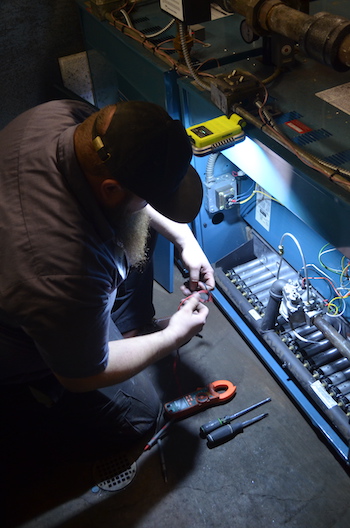 And don’t take his word for it, read what customers are saying about Alan and his professionalism. According to an online review, “This is the second time I have had Alan C. over to check on our plumbing. He is always friendly and very knowledgeable. He has a considerable level of experience and he has been able to answer all of my questions. When presented with options for needed services, he is honest in giving feedback with absolutely no pressure. Armbrust is a great plumbing company.”
And don’t take his word for it, read what customers are saying about Alan and his professionalism. According to an online review, “This is the second time I have had Alan C. over to check on our plumbing. He is always friendly and very knowledgeable. He has a considerable level of experience and he has been able to answer all of my questions. When presented with options for needed services, he is honest in giving feedback with absolutely no pressure. Armbrust is a great plumbing company.”
Carlson was introduced to the trades at a very early age because his great grandfather, C.J. Erickson, started one of the oldest, and still one of the most successful, plumbing businesses in Chicago. In 1906, Carl Joseph “Joe” Erickson immigrated to America from Sweden, settling in Chicago. Joe, an accomplished plumber, signed with Plumbers Local 130 and set out to live the American dream, opening his own shop.
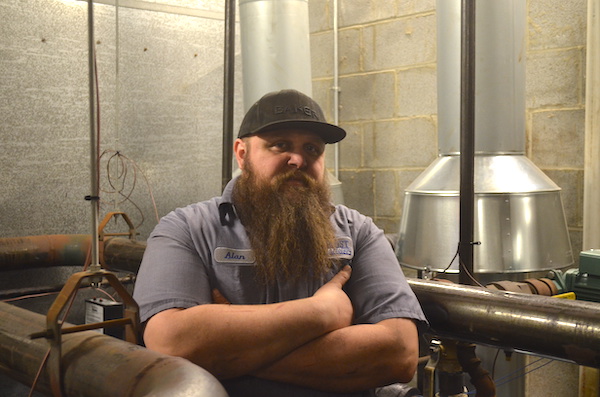
Although Carlson never worked at his great grandfather’s shop in the city, he got a taste early in his youth of what working in the trades would be like. “I didn’t know what career I wanted after high school. I tried the local junior college without any direction, hoping I would magically find something. I didn’t even finish a year. I decided that if my family can run a successful plumbing company in Chicago for four generations, and if my neighbor who owns his own company can make a good living, I would try plumbing,” says Carlson.
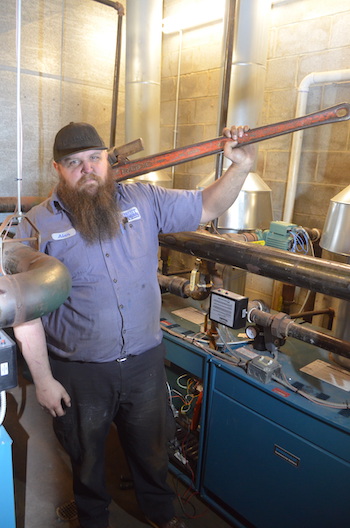
The trades have enriched Carlson’s life because he now possesses important and highly desired skills. “I also have a better understanding and much higher respect for those who work physically hard to earn their wage,” says Carlson.
Carlson stresses that there never should be a negative stereotype attached to being in the trades. “Having a career in the trades does not mean that you’re dumb or dirty or should be looked down upon. A trade is a highly skilled and highly needed job. If you want to have a career where you will always be needed, regardless of the economy, become a plumber. And if you do decide to get into it, work hard, never stop learning and never stop asking questions; be the first one there and the last one to leave,” says Carlson.
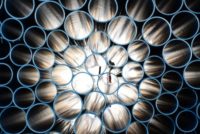
Mechanical Hub recently interviewed David Fink, President and Executive Director of The Plastics Pipe Institute, Inc. (PPI). Mr. Fink, a veteran of the plastics pipe industry, previously served as the Chairman of the PPI Board of Directors from 2017 to 2019, and has held a number of other leadership positions within the organization. PPI is Read more
 Mechanical Hub recently interviewed David Fink, President and Executive Director of The Plastics Pipe Institute, Inc. (PPI). Mr. Fink, a veteran of the plastics pipe industry, previously served as the Chairman of the PPI Board of Directors from 2017 to 2019, and has held a number of other leadership positions within the organization. PPI is the major North American trade association representing all segments of the plastic pipe industry.
Mechanical Hub recently interviewed David Fink, President and Executive Director of The Plastics Pipe Institute, Inc. (PPI). Mr. Fink, a veteran of the plastics pipe industry, previously served as the Chairman of the PPI Board of Directors from 2017 to 2019, and has held a number of other leadership positions within the organization. PPI is the major North American trade association representing all segments of the plastic pipe industry.
Fink most recently served as the Senior Vice President at PPI member company, WL Plastics, and previously at Dow Chemical in the company’s polyolefin resin business with the majority of the years being part of growing its plastics pipe resin business. While at WL Plastics, he oversaw significant growth of the company’s sales in the polyethylene pipe market segments including gas gathering and distribution, municipal water distribution, industrial and mining applications, telecommunication conduit, and geothermal.
MH: You’ve been on the job for a little more than a month, what’s a typical day at PPI?
DF: Working with our talented PPI engineers, staff, and membership to meet the needs of the plastics piping industry. This includes helping design engineers and pipe users to understand correct applications of the products we represent; overseeing the development and revision of industry regulations, codes & standards; and advancing the industry’s knowledge of Plastic Piping Materials through various education and advocacy activities.

MH: What is the mission and vision of PPI?
DF: The Mission of the Plastics Pipe Institute is to advance the acceptance and use of plastic pipe systems through research, education, technical expertise and advocacy. There are 4 pillars within our strategic plan:
- Research & Education (develop technical information about the products and connecting target audiences with content)
- Advocacy/Voice (Serve as the voice of the industry for plastic pipe systems)
- Expansion and Growth (Support market share growth for plastic pipe systems, and broaden the sphere of influence for the industry)
- Member Engagement (increase the value of membership through active involvement in PPI)
MH: The market has seen significant growth over the past 10+ years, how is the current economic climate affecting the industry? What are some of the challenges and how is PPI addressing those challenges?
DF: The recent strong construction economy has provided the plastics pipe industry lots of opportunity for growth and expansion, including both new construction and rehabilitation of existing infrastructure. Plastic piping is finding its way into new applications every day, as engineers and end users better understand the capabilities of these proven systems. This stems from the continued success of plastic pipes to outpace the growth of alternate materials due to extended service life, corrosion resistance, ease of installation, and lower total installed costs and maintenance over the lifetime of the system.

MH: How is PPI addressing environmental issues in the industry and the “Green” movement?
DF: Plastics piping systems do not corrode or leak over time, and thus save valuable resources like our water supply. Their longer life expectancy saves on replacement materials and costs. They are lightweight, so more material can be shipped on a truck, reducing carbon emissions related to transportation. And many plastics can be recycled at the end of their lifetime. Some plastic pipe materials, such as drainage pipe, already utilize post-consumer recycled plastic material content.
Renewable energy sources, solar and wind for example, utilize plastic conduit to protect the power cables. In the plumbing and mechanical industry, plastic pipes are an essential part of geothermal ground loops, ; radiant heating and cooling systems,, snow melt systems; and fire protection systems. In agriculture, plastic pipes provide irrigation and drainage for fields to increase crop production.
MH: What are a few trends that PPI has identified in the industry?
DF: With greater acceptance of plastic materials, especially for commercial plumbing and mechanical applications, comes the growing demand for education and training, so we are innovating to try and meet those needs. With economic growth challenging the N.A. workforce, including contractors and engineers, there is also higher demand on non-biased industry experts, such as PPI staff, for design and application guidance when using these materials.
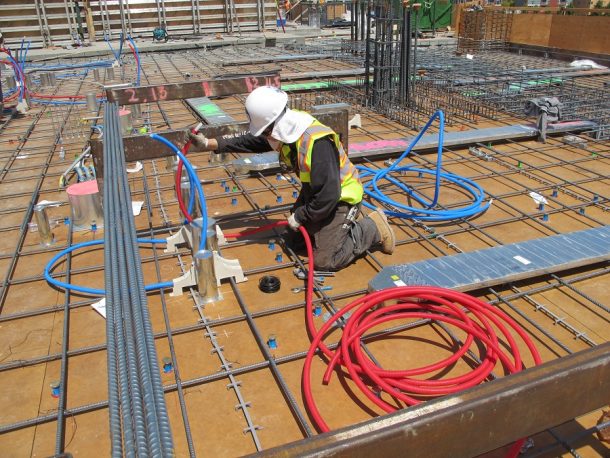
MH: How do you see PPI changing in the future, and how do you see yourself helping in creating that change?
DF: I look forward to leading the organization as PPI will continue as the voice of the plastics piping industry. As new plastic materials are created or as current materials evolve, PPI will work with the industry to provide the technical support for the standards and codes arena and educate and train the next generation of engineers, contractors, and other key stakeholders on the value that plastics piping systems bring to the industry. PPI has been growing constantly since the year 2000, in terms of members, staff, and the scope of our work. We don’t see this trend slowing down any time soon.
MH: How are standards used in the industry, and what have they meant to its overall history and development?
DF: Standards improve product quality, provide engineers and end users with confidence that these are products that they can count on to meet their needs, and strengthen the market by providing consistency, safety, and reliability. Believe it or not, several plastic pipe standards were first developed in the 1970s. In fact, the first ASTM standard for PEX was published in 1984. These standards are constantly evolving, and PPI’s engineers focus a lot of their time on standards development. It’s an essential part of the safety and reliability that our systems deliver every day.
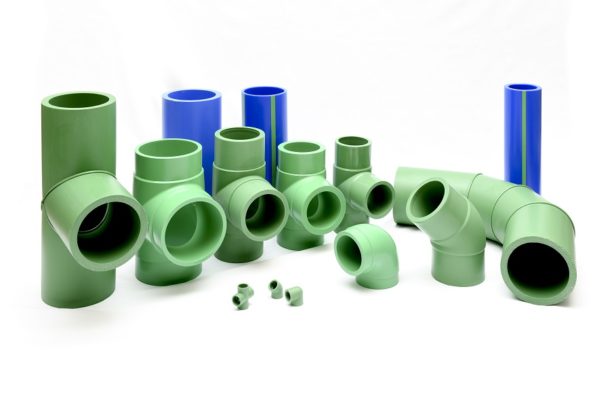
MH: How are you strengthening and building on your brand, training and resources available to members and non-members?
DF: Continuing to develop technical content including design manuals; installation guidelines; engineering calculators, case studies, and other related materials, and sharing these tools through our website. PPI engineers are present in various organizations, such as ASHRAE, ASPE, RPA and HIA-C, to act as the Subject Matter Experts on plastic piping materials and systems. PPI remains active in standards and codes organizations to create and improve their publications by continuing to raise the bar on reliability and performance of plastics piping systems. Finally, PPI is out in the field with our members, training and educating and will be developing more online educational content to provide this training to a broader audience.
MH: What are some of the things you’re doing to boost PPI’s visibility?
DF: I’ll be active with other organizations with similar interests in advocacy efforts to raise awareness on the features and benefits of plastics piping systems. PPI is also increasing our social media and website presence to reach a larger audience and has begun development of online education platform using a learning management system.
MH: In closing, is there anything you’d like to add?
DF: It’s an exciting time for plastics in piping applications as more and more people are learning about the features and benefits that plastics bring to the built environment over older, traditional materials. Plus, improvements in current materials and innovations in new materials are opening new applications for plastic materials. I’m looking forward to working with PPI staff and its membership and partner organizations to continue to grow the marketplace for plastics piping solutions.

This week’s episode of Beyond the Service tackles tips and tricks at cracking the code on how to deal with customers leaving bad reviews. John & Devynn are just scratching the surface with this one and will dive deeper on online reviews but you don’t want to miss this episode. https://www.youtube.com/watch?v=D5lcstgiZ_8 Read more
This week’s episode of Beyond the Service tackles tips and tricks at cracking the code on how to deal with customers leaving bad reviews. John & Devynn are just scratching the surface with this one and will dive deeper on online reviews but you don’t want to miss this episode.
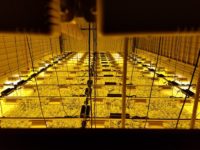
This paper refers to legal professional cannabis growers complying with state/provincial laws. Professional cannabis growers are well aware that environmental conditions play a critical role in plant quality and overall yield. Most can recite the ideal temperature and humidity for their crops without missing a beat. But ask most growers which type of pipe is Read more
This paper refers to legal professional cannabis growers complying with state/provincial laws.
Professional cannabis growers are well aware that environmental conditions play a critical role in plant quality and overall yield. Most can recite the ideal temperature and humidity for their crops without missing a beat. But ask most growers which type of pipe is best and they’ll likely to refer you to the closest head shop. The fact is professional growers (of cannabis or otherwise) are generally unaware of the piping options they have or the extent to which these options impact structural costs, energy efficiency and overall sustainability. When these matters are given proper consideration, polypropylene emerges as a great choice for this burgeoning industry.
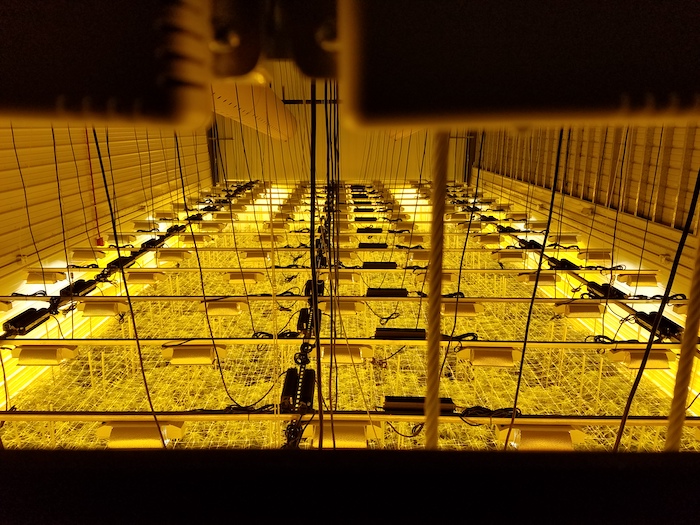
Cannabis growing facilities use a lot of energy and generate a lot of heat, making a reli- able cooling system essential.
Polypropylene pipe has been widely used for plumbing and hydronic heating in Europe since the 1970s. However, it was not introduced to North America until 2005. Since then, it has become increasingly popular for a wide range of applications, from radiant heating of sports fields to process applications in craft breweries. It is a lightweight yet highly durable thermoplastic pipe with pressure and temperature tolerances that make it suitable for hydronic heating and cooling, potable water, and industrial and food-grade applications.
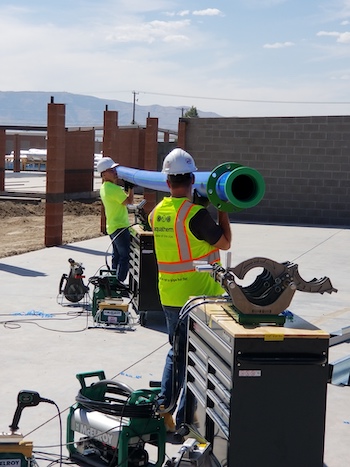
Depending on size and wall thickness, polypropylene pipe can weigh up to 70% less than carbon steel pipe.
Unlike metal pipe, the installation of polypropylene pipe does not involve traditional torch welding. Instead it relies on a flameless heat-fusion method that’s easy to learn and highly reliable at creating virtually leak-free connections. When contractors become adept at heat fusion, they can typically install polypropylene piping much faster than welding copper, carbon steel and stainless-steel pipe.
An appealing characteristic of polypropylene is its chemical purity and inertness. It does not rust, scale or leach any impurities into to the fluids it transports, nor does it react with most chemicals. This not only improves its longevity over other piping materials, it also makes it suitable for a wide range of applications. Furthermore, unlike PVC or CPVC piping, polypropylene pipe does not become brittle or susceptible to cracking when exposed to cold temperatures. A full list of the physical/performance characteristics of polypropylene and associated benefits is shown in Table 1.
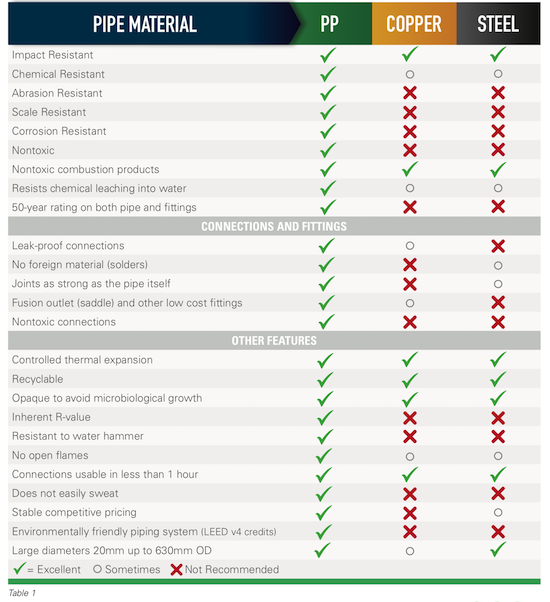 Where does polypropylene fit into the day-to-day operation of a grow facility? The answer is pretty much any application that requires the transport of fluids. But to truly understand the potential roles that polypropylene can play in the growing cannabis industry, one must first look at the special needs, challenges and values of the industry.
Where does polypropylene fit into the day-to-day operation of a grow facility? The answer is pretty much any application that requires the transport of fluids. But to truly understand the potential roles that polypropylene can play in the growing cannabis industry, one must first look at the special needs, challenges and values of the industry.
An Energy Intensive Industry
The electrical demand of cannabis grow facilities is staggering. According to the 2018 Cannabis Energy Report, legal cannabis cultivation in the U.S. consumes an estimated 1.1 terawatt-hours of electricity a year, enough to power all of Newark, New Jersey or Anaheim, California.[1] In indoor grow facilities — very often repurposed warehouses or other types of vacant buildings —this massive energy consumption is caused by the artificial light required to grow cannabis. Heat from these lights imposes another energy burden: cooling. Year-round cooling loads are unavoidable in indoor facilities since carefully controlled space temperatures are essential for growers to achieve maximum yields. Greenhouse facilities may avoid most of the need for artificial light, but still need heating, cooling and dehumidification. In either case, large facilities benefit from the long-term efficiency of centralized hydronic heating and/or cooling systems, which are typically about 15 percent to 20 percent more efficient than other HVAC options.[2] These systems utilize piping to transport the heating water to and from a central boiler system and to transport cooling water to and from a chiller and/or evaporative cooling equipment.
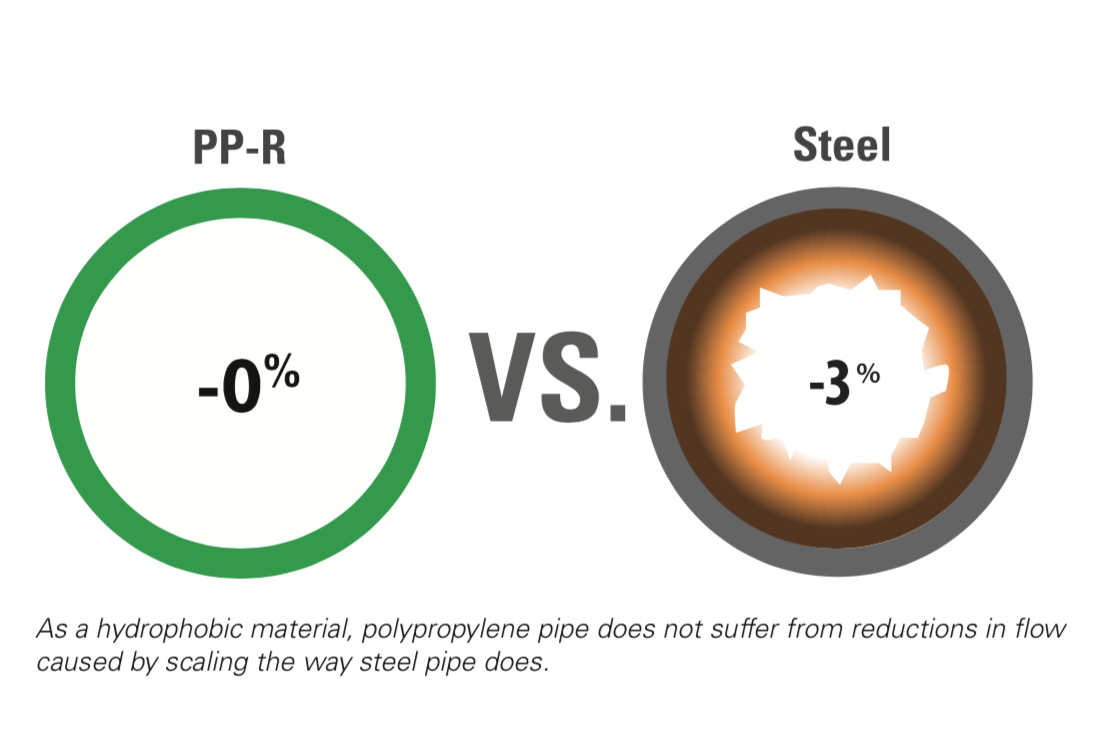
Polypropylene piping is ideal for these applications for reasons that directly impact the efficiency and longevity of a grow facility. First, the inner walls of polypropylene pipe are uniquely smooth, resulting in reduced friction losses, reducing pump energy consumption. The friction losses of polypropylene start out low and remain low for the life of the system because the pipe is not susceptible to rust or scale. Steel, copper and other metals do rust and corrode over time, increasing friction losses and the pump energy required to overcome those losses.
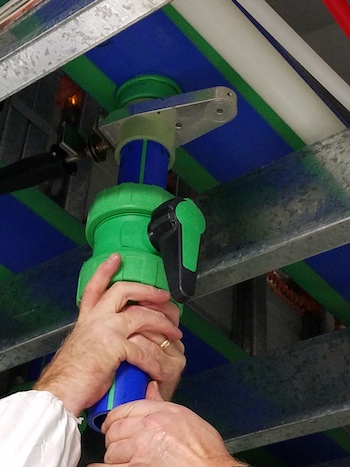
Socket fusion (shown here) is one method of heat-fusing polypropylene pipe and fittings.
Polypropylene pipe also can be used in conjunction with geothermal heat pump systems which are frequently applied in agriculture. Geothermal systems rely on the earth or a body of water as a heatsink and/or heat source for highly efficient transfer of heat to and from the growing spaces for space conditioning and agricultural processes. In these applications, polypropylene pipe transports the heating and/or cooling fluid from the central energy source to forced-air equipment or a radiant distribution loop. The pipe can be buried in the ground and/or concrete floors without the need for any protective sleeves or wrap.
Another strategy that grow facilities often use to reduce their energy consumption is heat reclaim. In these applications, polypropylene pipe can be used to transfer energy to or from process water, wastewater, or any other source that can be used to pre-heat or pre-cool water for other heating, cooling or process needs. This gives growers the opportunity to fully optimize whatever resources are available to them – whether it be the sun, a nearby lake, or even a nearby wastewater treatment plant. It’s all been done with polypropylene.
Specialized Growing Strategies
Not all commercial cannabis is grown in soil. Some is grown hydroponically with plant roots submerged in a nutrient-rich solution of water and fertilizers while others are grown aeroponically with roots suspended in air, drawing nutrients from a sprayed mist. These grow strategies very often rely on high purity water (typically reverse osmosis or deionized water) when existing water sources are determined unsuitable.
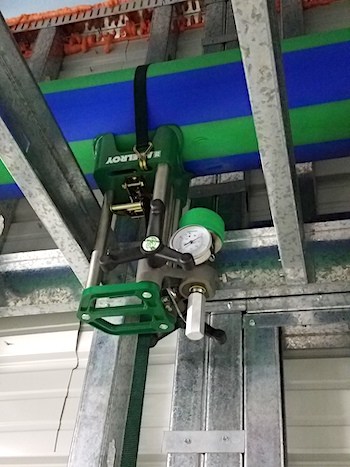
Versatile fusion tools allow polypropylene pipe to be heat- fused in spaces in which welding metal pipe would be difficult or impossible.
High purity water automatically limits piping options. Copper should never be used with deionized water because if the fluid’s pH levels fall below 6.5, corrosion may occur and copper molecules can leach into the supply. Although stainless steel piping is an option for these applications, it is often cost-prohibitive and it, too, will leach over time if the water should become too acidic or too alkaline. Polypropylene is ideal for these applications because it does not leach, and its installation never requires the use of any potential contaminants such as solder, flux or glue. It can even be used for potable water and food processing since it is available in formulations that meet both NSF 51 and NSF 61.
Facilitating Construction and Expansion
Growers and owners are typically under a lot of pressure to quickly get grow facilities operational so they can begin the journey from seed to profit as soon as possible. Construction schedules are always a challenge, particularly when it comes to mechanical components like piping. Installing metal pipe requires licensed welders (expensive and increasingly scarce) as well as special permitting for the use of open flames on a jobsite. In addition, maneuvering heavy sections of metal pipe into existing structures and then supporting it so it can be welded into place is both logistically and physically challenging. Under these circumstances, a seemingly trivial error like a miscalculation in metal pipe length can put a project several days (if not weeks) behind schedule.
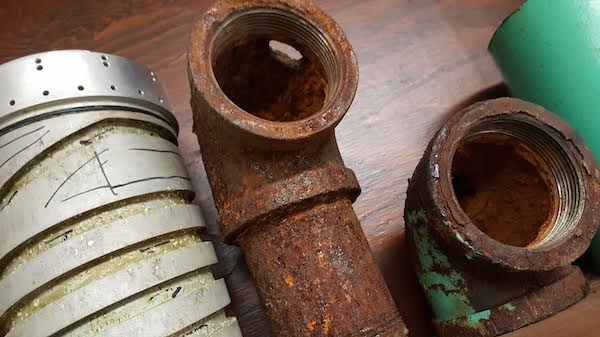
Polypropylene pipe is hydrophobic and will never scale and corrode the way metal pipe does.
Opting for polypropylene pipe keeps these jobsite nightmares at bay for the following reasons:
- Polypropylene is lightweight – especially helpful in greenhouses where structural support is limited
- Polypropylene fittings can be prefabricated offsite in controlled areas so that jobsite fabrications are minimized – some manufacturers even offer fabrication services
- Improper lengths can usually be amended at the jobsite with little disruption to work schedules
- The pipe’s maneuverability compared to metal means it can be better negotiated in tight spaces
If an owner has hopes to expand the facility in the future (as many do), polypropylene piping systems are much easier to build out than metal pipe. Strategically located shut-off valves make it easy to isolate flow and cut into existing pipe to create new connections with minimal disruption to current operations. Fusion outlets allow for easy and relatively inexpensive expansions and one manufacturer offers a hot tap solution. Again, no flames or permits are required.
Beer There, Done That
If cannabis entrepreneurs need relevant examples of all that polypropylene can do, they need only look as far as the craft brewing industry. Craft brewers, an intensely collaborative group, have solidly embraced polypropylene for all that it has to offer, most notably its purity, sustainability, and fast and flexible installation – interests that closely parallel those of the cannabis industry.
“The word of mouth in the craft brewing industry is amazing, so we’ve had tremendous growth from breweries using it, not just for the glycol lines but in their heating and cooling applications, their geothermal applications, their domestic water supply, CO2, compressed air applications and beyond,” said Barry Campbell, VP of Marketing at Aquatherm, a leading manufacturer of polypropylene pressure piping systems.
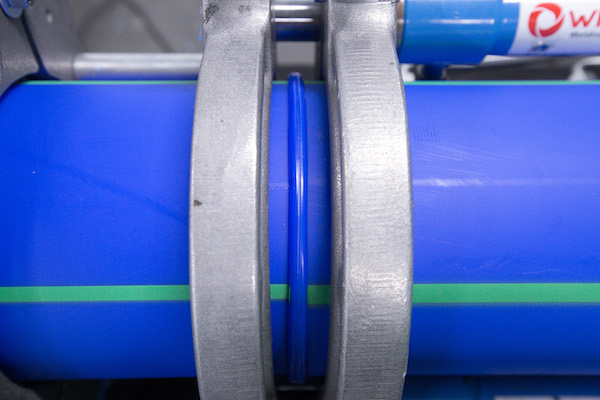
A properly executed heat-fusion on polypropylene pipe creates a single piece with no leak paths.
According to Campbell, the fact that polypropylene is among the most environmentally friendly piping systems available has helped Aquatherm gain favor among craft brewers. One polypropylene pipe manufacturer has also done the certification work to allow the product to contribute to LEED v4 credits in the U.S. Green Building Council’s (USGBC) program.
An interest in sustainability is just one of the many commonalities that exist between the cannabis and brewing industries. Like so many newly incorporated cannabis growers, many craft brewers begin their entrepreneurial journey in the shell of a vacated building where existing infrastructure can challenge piping installations. The building or parking lot next door is “Phase II” of their venture. Finally, owners are often the same people brewing the beer or growing the cannabis, so they tend to be more hands-on in the selection of mechanical equipment. They do their own research and tend to look outside the box for ways to conserve energy.
Robert Millspaugh, operations supervisor at Flathead Lake Brewing Company in Bigfork, Montana, did extensive research on what piping to use for the process side of the brewery before ultimately choosing polypropylene. Flathead Lake, born from the ruins of an old bowling alley, installed several thousand feet of polypropylene to transport both heating water and glycol for heating, cooling, and process applications. Part of the system even uses clean effluent from a nearby water treatment plant to indirectly pre-temper process water for better efficiency.
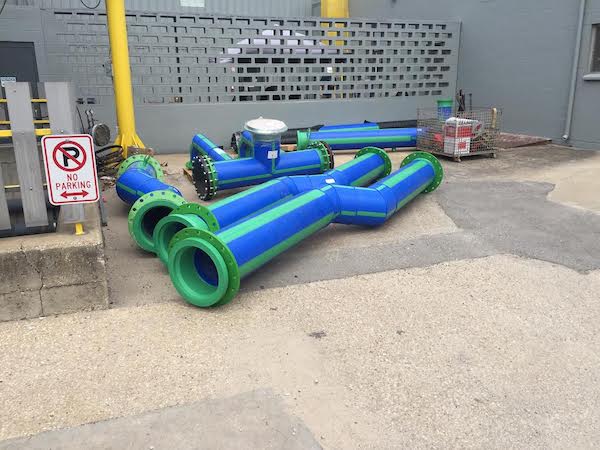
“We were looking for products that would help us achieve a LEED certification and [polypropylene] had a lot to offer. I also came across an article on Epic [Brewing Company in Salt Lake City] and how they used [polypropylene] in a renovation and discussed the product with the brewer there,” said Millspaugh.
Polypropylene also has been used successfully in brewing applications that require piping for food-grade and potable water.
Avondale Brewing Co., in Birmingham, AL was the first North American brewery to use Aquatherm’s food-grade (NSF-51) polypropylene pipe to transport beer from vessels in the main brewery to its packaging building where it is kegged, canned and bottled. The piping, which also is NSF-listed for potable water, is cleaned and sanitized between uses. Of course, like all of the manufacturer’s polypropylene systems, the piping is guaranteed to be free of heavy metals and toxic chemicals.
Cleanliness is a high priority in breweries and is one of the main reasons Founders Brewing Co. in Grand Rapids, MI, decided to use polypropylene in a heat reclaim process that taps heat from the brewing process to pre-heat outdoor air before it enters the building’s HVAC system. The piping is wash-down rated, so the brewer can keep the brew facility sparkling clean.
Examples like these demonstrate the potential for polypropylene piping in the cannabis industry.
“The craft brewing industry and everything it has been able to do with our pipe has created an unexpected blueprint for cannabis growers and how they can use polypropylene to facilitate construction, save energy and be more sustainable,” said Campbell.
[1] New Frontier Data, 2018 Cannabis Energy Report. Scale Microgrid Solutions and Resource Innovation Institute, co-authors. https://newfrontierdata.com/product/2018-cannabis-energy-report/
[2] Surna, Sustainability for Your Indoor Garden (blog) https://surna.com/sustainability-for-your-indoor-garden/

It started with a bottle opener. When Mike Cheatham, co-owner of Movable Roots, was at the International Builder’s Show in Orlando a couple of years ago, he stumbled upon the Viega booth, where he used a press tool to create a bottle opener with a piece of Viega PureFlow PEX. He was hooked. “I was Read more
It started with a bottle opener.
When Mike Cheatham, co-owner of Movable Roots, was at the International Builder’s Show in Orlando a couple of years ago, he stumbled upon the Viega booth, where he used a press tool to create a bottle opener with a piece of Viega PureFlow PEX. He was hooked.
“I was amazed at how easy it [making the press connection] was and started to think about how easy it would be for us in the labor we were doing,” Cheatham said. “It wasn’t like sweating copper or anything like that, and the more I looked at PEX, I knew it was something I wanted us to use in our homes. When I looked at the competitors out there, I wasn’t crazy about them. We picked Viega.”
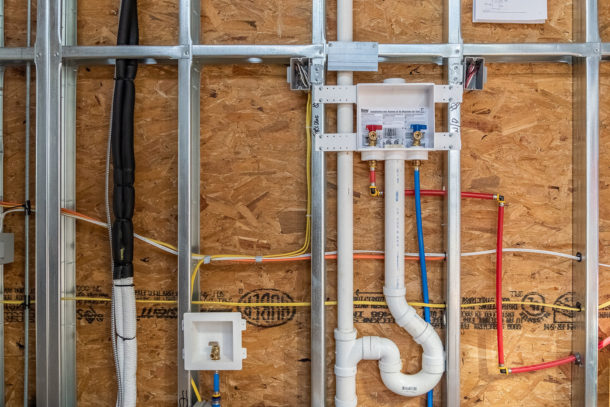
Cheatham and his brother Jonathan own Movable Roots, which builds high-end custom tiny homes. All of them include Viega PureFlow products for the water supply
“We bought the Milwaukee tool and jaws and use both the ¾ and ½ fittings. We’ve also started using Viega parts, like the washer and dryer box, with the press system and the ice-maker line for the fridge,” Cheatham said. “Each build depends on what kind of customization people want, but we plumb in the water heaters and everything with Viega.
“There’s a lot more linear feet of PEX in a tiny home than most people think! Plus we take advantage of the flexibility of PEX. We run a lot of supply lines in the belly of the trailer itself, not a lot in the walls, so using the bends and things, we want as few connections as possible down inside the trailer,” he added.
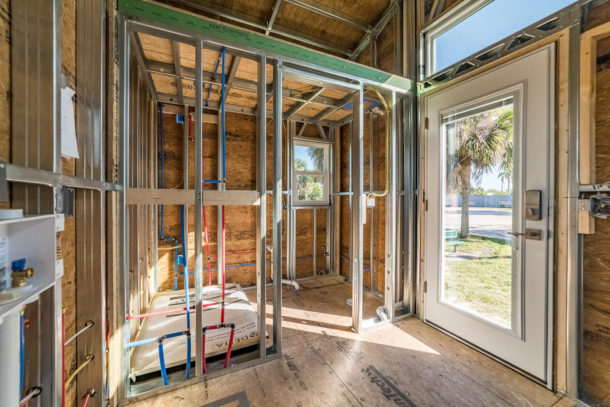
Roots of the company
The history of Movable Roots goes back a bit. Mike and Jonathan (and their late brother Paul) grew up in construction because their dad was a remodeler, so Mike jokes that he grew up with a hammer in his hand. During the boom and height of the market in the early 2000s, Cheatham was building large homes with a healthy-sized crew. Then the bottom of the market fell out, and a couple of builders Cheatham was working for shut their doors unexpectedly, which eventually led to him taking a break from construction.
A few years later, he and his wife, Nikki, talked about building their own house, possibly on the water. He said the thought process was to spend more on property and put a smaller house on it, which led them to research tiny homes.
“We went to some builder shows and we weren’t seeing a whole lot that fit our lifestyle,” Cheatham said. “We felt like if we were going to go tiny, why can’t we have some of those finer features in the houses that we used to build? If I only need 300 square feet of flooring, why not buy the more expensive, beautiful stuff?”
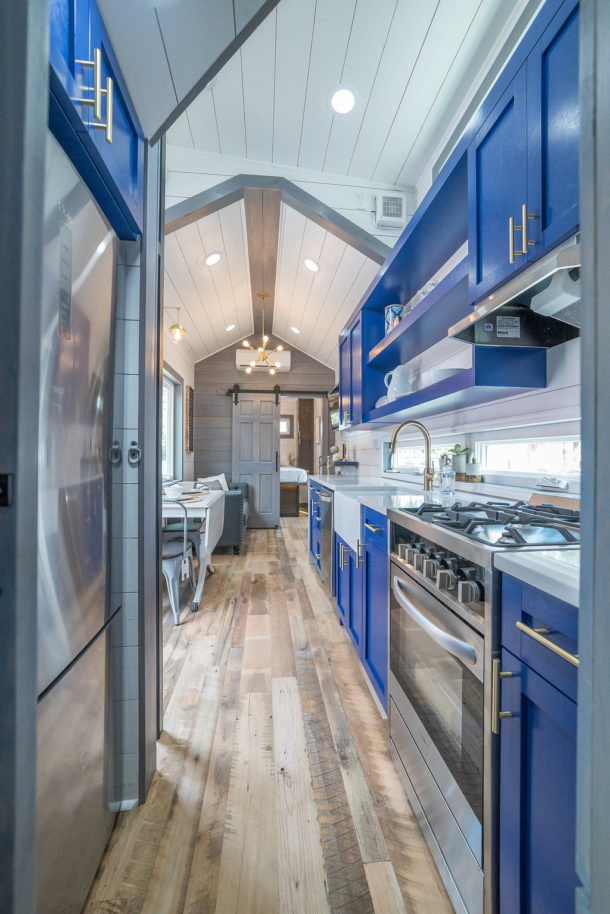
They bought property in Florida, only to learn that local zoning regulations prohibited them from putting a tiny home there. But the Cheathams weren’t discouraged. They decided to see if they could not only change rules and regulations, but they also decided to jump back into the building world.
A new venture
In 2017, Movable Roots introduced its first model, The Henderson – named for their brother Paul Henderson – and Mike said “it’s been kind of a crazy whirlwind since.
“We worked with a group to get zoning changed locally, and now there is a whole tiny home community going up in northern Brevard County,” he said. “And we still own our property and talk about what to do with it. We’re so busy building for other people that maybe we’ll put a spec home on it, who knows. We haven’t let go of the dream of living on it.”
In the meantime, Cheatham has taken on the challenge of designing tiny homes to meet the daily needs of owners.
“It was a crazy learning curve in the beginning. When we were building a normal 2,000-square-foot home, the plumbing or electrical stack of something in the rough stage could be shifted three to 12 inches and it wouldn’t affect anything negatively,” he said. “In a tiny house, if I have to shift something a quarter of an inch, it might mean the couch doesn’t fit!”
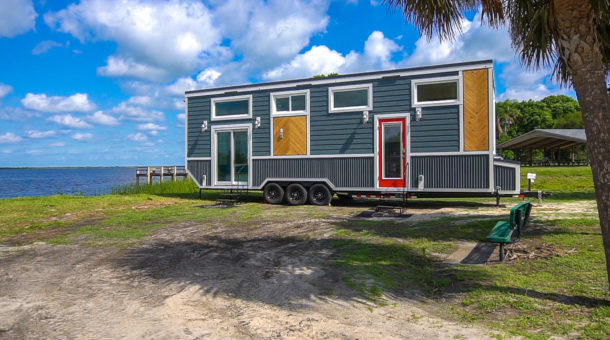
Cheatham credited the flexibility of Viega’s PureFlow tubing and fittings in helping to make it possible. Because exterior walls might be only three and a half inches thick, there are limited spaces for things like supply lines. PureFlow fits.
“The system itself is very user-friendly,” Cheatham said of PureFlow. “We had a plumber friend who had never used it, but had used Uponor and other systems. We’ve asked him in to help a few times when we got bogged down in difficult scenarios, and he loves [Viega]. He raves about the ease of use of it!”
In 2018, Movable Roots built eight houses, and Cheatham said they were on track to build the same in 2019. Their creations are everywhere, from California to Texas to Montana. One of their builds was featured on the TV show “Tiny House Nation.”
